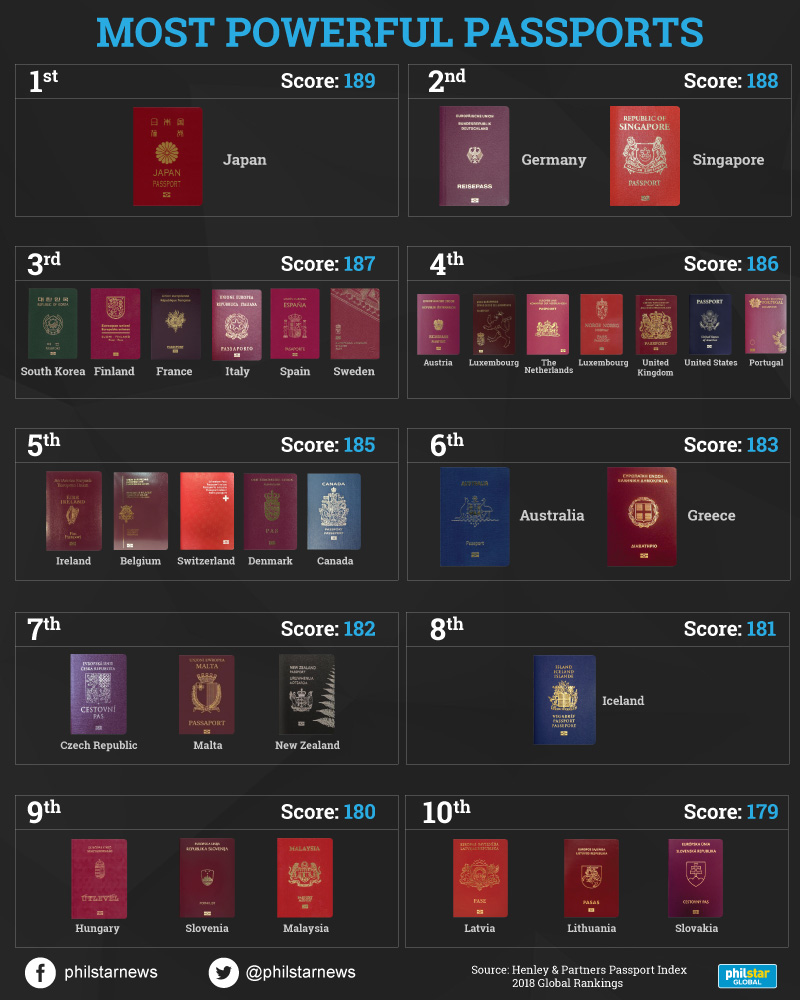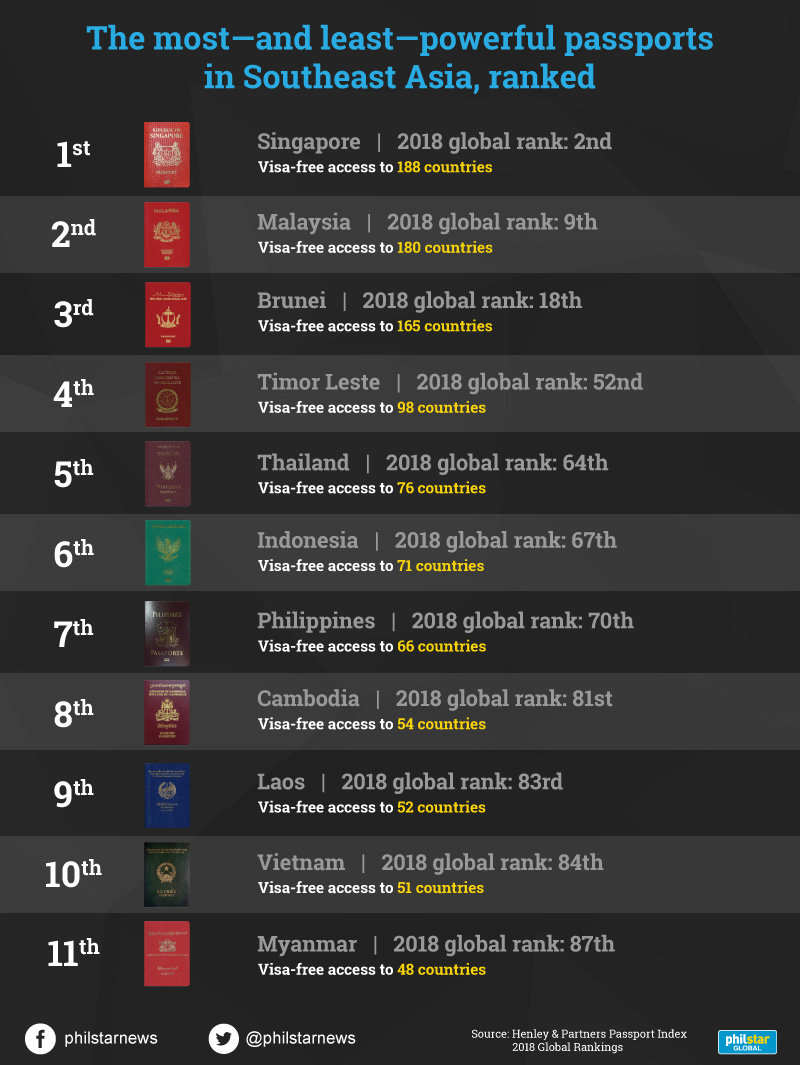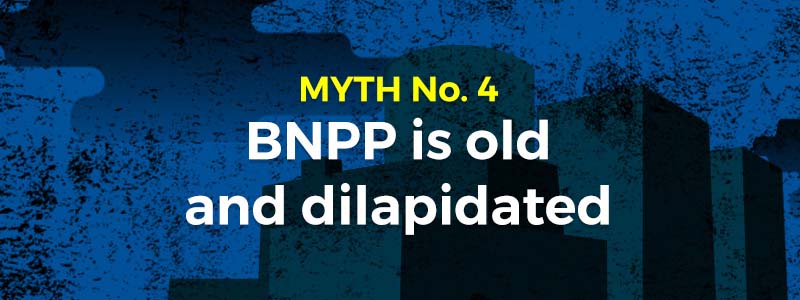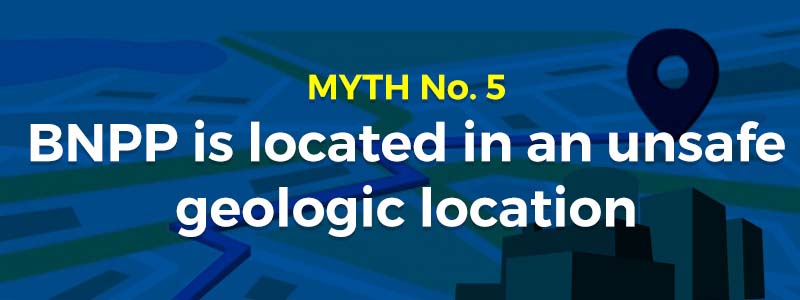By: Kristine Joy Patag (philstar.com)
MANILA, Philippines — The Philippine passport has moved two spots higher but remains in the lower half of the latest world’s most powerful passports rankings.
The Philippines moved from the 72nd spot to the 70th in the latest Henley Passport Index released on May 22.
The list ranked 199 passports from one to 100 according to the freedom they allow their holders to travel visa-free to up to 227 different travel destinations—including countries, territories and micro-states.
image: https://media.philstar.com/images/the-philippine-star/infographics/20180524/powerful-passport.jpg

The Philippines shared the 70th spot with Azerbaijan, the Dominican Republic and Tunisia. A Philippine passport holder now has visa-free access to 66 countries, three more compared to the index released in January.
Japan emerged as the most powerful passport allowing visa-free entry to 189 destinations.
Germany and Singapore shared the 2nd spot as their passport holders could visit 188 destinations without a visa. Singapore is the only Southeast Asian country to land a spot on the five most powerful passports list.
Ranking 3rd were passports from Finland, France, Italy, South Korea, Spain and Sweden which could freely enter 187 destinations.
Meanwhile, Afghanistan and Iraq ranked as the least powerful passports at the 100th spot as they allow visa-free access to only 30 destinations.
Southeast Asian rankings
The Philippine passport fell to the 7th spot compared to its Southeast Asian neighbors.
Indonesia, meanwhile, is the biggest gainer in the region as it jumped 12 spots to 67th from 79th in the 2017 global rankings.
Malaysia followed Singapore as the second most powerful passport in the region as it allows visa-free access to 180 countries.
Brunei, Timor Leste and Thailand landed the 3rd, 4th and 5th spot, respectively.
Meanwhile, Myanmar ranked the lowest, granting visa-free access to 48 countries only.
image: https://media.philstar.com/images/the-philippine-star/infographics/20180524/powerful-passport-southeastasia.jpg

The Henley Passport Index is a ranking of all the passports of the world according to the number of countries their holders can travel to visa-free.
The ranking is generated from exclusive data of the International Air Transport Association, which maintains the world’s largest and most comprehensive database of travel information.
Read more at https://www.philstar.com/headlines/2018/05/24/1818250/philippines-still-weaker-half-most-powerful-passport-list#kOigKbbuZ1ARhpDv.99




